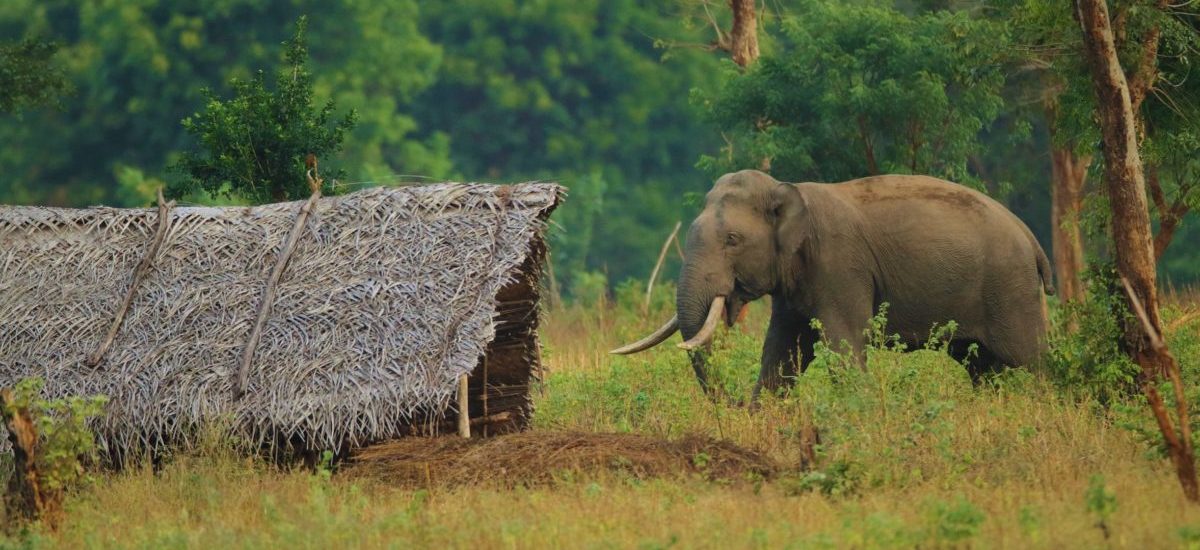Photo courtesy of Mongabay
Whenever President Gotabaya Rajapaksa embarks on a “discussion with the villagers” visit, Sri Lanka’s environmental defenders shudder in anticipation of yet another verbal executive order resulting in the destruction of more trees, more wetlands, more wildlife and more plants. They lay the ongoing pillage of the country’s natural resources squarely at the President’s door.
“The President is providing leadership for environmental destruction,” said environmentalist Rukshan Jayewardene, an opinion echoed by Jayantha Wijesingha of the Rainforest Protectors Trust. “The country is heading for disaster because of a lack of vision, a lack of understanding and a lack of wisdom. Those close to the president should educate him on what a conservation strategy should be,” he said.
“We are greatly concerned about your apparent endorsement of land grabbing, and encroachment into forests, thereby destroying precious wildlife habitats and water catchment areas,” said a group of organisations and individuals determined to halt Sri Lanka’s descent into ecocide in a petition to President Rajapaksa.
At his eighth discussion with the villagers programme in Monaragala, President Rajapaksa instructed officials to withdraw cases filed under existing laws that prevented cultivation on land protected by the Flora and Fauna Act. He said that outdated laws, regulations, taxes and charges that prevented people from freely undertaking self-employment, traditional industries or businesses need to be revised swiftly. Officials of the Wildlife Department, the Forest Department, the Environment Ministry and the Lands Ministry are now rendered incapable of enforcing the laws enacted to protect tracts of land home to a range of diverse species of flora and fauna, some on their inevitable path to extinction.
Sri Lanka has less than 17 per cent of true forests remaining and these forests are home to over 7,500 species of flora and over 15,000 species of fauna some of which, if they were to disappear, they would be gone forever. The destruction of forests results in droughts, floods, loss of pollination and loss of crop yields as well as damage to water sources, according to the petition presented to the President.
The President, who directed officials to solve the human-elephant conflict in two years, ordered the degazetting of the Dahaiyagala Wildlife Sanctuary, a 27 square kilometre protected area that serves as an elephant corridor allowing for the movement of wildlife out of Udawalawe National Park, which would result in deaths of people and animals as the elephants try to find another way out. It would also result in land grabbing and forest clearing within the sanctuary.
“Loss of forest and wildlife corridors will create elephant-human conflicts, loss of water catchments and many other environmental and social issues. In 2020, 320 elephants were killed, and 112 humans have also died due to the human-elephant conflict,” the environmentalists’ petition said.
President Rajapaksa’s idea of what constitutes the environment is clear from his independence day speech where he professed to “love and respect” the environment while citing the development of urban parks and walking paths as activities to protect the environment. He said the government was intent on preserving the environment for future generations. The ongoing policies and the situation on the ground clearly indicate that the exact opposite was happening.
The rot started as soon as the President took office in November 2019. In early December, the Cabinet approved a proposal to do away with the requirement of obtaining permits for the transportation of sand, clay and gravel, paving the way for unrestricted mining of these resources and its adverse environmental impacts. Environmentalists went to court and won so the government was compelled to reintroduce the permit system.
Since then it has been an endless litany of regressive policies, reversal of circulars and damaging verbal decrees, all to the detriment of preserving and conserving the country’s dwindling natural resources, some of which are non-renewable and will disappear forever in the name of development and progress.
For the environmental groups and individuals fighting the cause, legal action – a costly and lengthy process during which much destruction could take place – is the only way out.
Earlier this month, Veddah leader Uruwarige Wannilaeththo and the Centre for Environmental Justice sought a restraining order against a move to take over the aboriginal homelands and hand them over to major companies for maize cultivation. The Mahaweli Development Authority has taken over more than 5,000 acres of forest that have been used by the indigenous population for centuries to sustain their livelihoods. The petitioners pointed out that the companies, which acquire the land have illegally, filled them blocking the canals supplying water to Rambaken Oya, causing great environmental damage.
In Hambantota, the stronghold of the Rajapaksas, farmers are demanding a wildlife reservation for elephants to prevent them from raiding their fields and homes in search of food. The farmers accused the government of pursuing “thoughtless, large-scale development” that destroyed the elephants’ natural habitat, benefitting large agribusinesses rather than small farmers, going the same way as sand mining in Pulmoddai and mineral mining on Mannar island. Contracts are signed and work gets underway without any public scrutiny or accountability.
In the mad rush to build new roads and bridges in the city, Colombo’s RAMSAR wetlands are in danger of suffering irreversible damage to its biodiversity with the construction of highway in the Thalangama Environment Protection Area. In addition to the loss of livelihoods of farming and fishing communities, environmentalists say that destroying the lake would increase the threat of flooding.
With President Rajapaksa playing fast and loose with laws and regulations, lower level politicians also do not feel the necessity to do what is right rather than what is profitable, often to themselves. “In the face of political thuggery and intimidation from MPs and provincial councillors, officers in charge of protecting the environment are helpless to carry out their duties,” Mr. Jayewardene pointed out.
He pointed out that Sri Lanka was now reaching the minimum level of forest lands necessary to be deemed as safe for humans to survive. “When the forest cover of a country drops below the minimum requirement, it affects the environmental security of the country adversely as well as the sustainability of human existence,” Mr. Jayewardene said. He cited the example of Haiti, which had once been a land of forests and rivers but was now reduced to desert status because of over development. Haiti had to import all its food and depend on charity from rich nations.
The government was also erroneously promoting tree planting as reforestation, leading people to believe that it was acceptable to cut down forests and plant trees elsewhere. Mr. Jayewardene pointed out that a forest contained many species of different types of trees and plant and animal life in an ecosystem that could not be replicated by planting trees of one species in rows.
In the petition highlighting the dangerous plight of Sri Lanka’s environment, the signatories appealed to President Rajapaksa to listen to the “true agriculture experts and the conservation community” to save Sri Lanka from ecocide and the terrible natural disasters that it would inevitably bring.
For the sake of present and future generations, he must listen.
Read the full petition here.
Watch excerpts from the interview with Rukshan Jaywardena in the video below.


